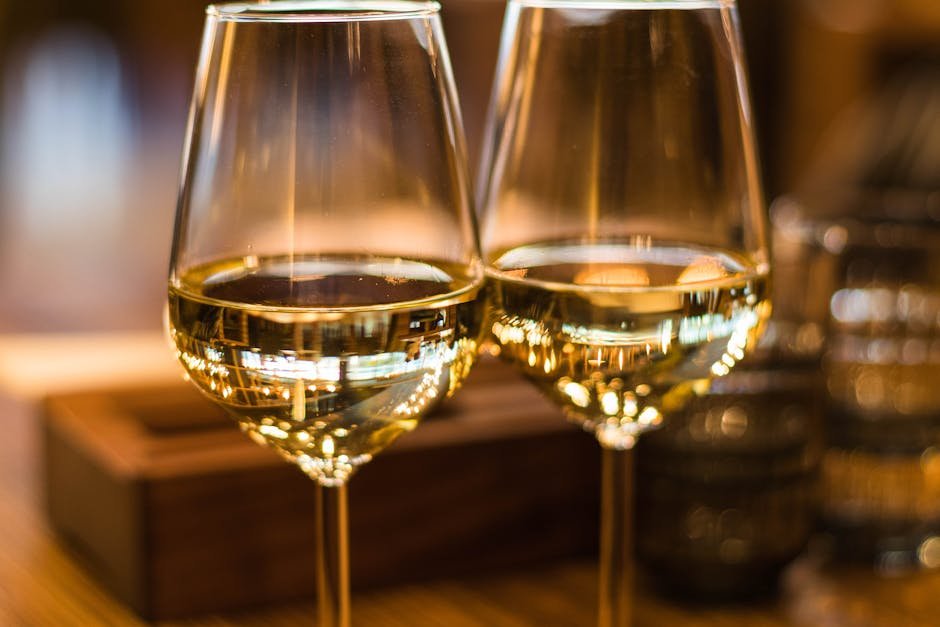How Do You Understand Wine Tasting Notes?
Do wine tasting notes leave you puzzled? Fear not! Understanding wine tasting notes can be a delightful journey of discovery. Let's uncork the secrets together.
Decoding Wine Labels
Deciphering wine labels can feel like cracking a secret code, but it doesn't have to be daunting. Look for key information like grape varietals, region, and winery. Understanding these basics can give you a preview of what to expect in the wine tasting notes.
Moreover, the year the wine was produced, known as the vintage, plays a significant role in the wine's flavor profile. Young wines tend to be more vibrant and fruity, while aged wines display complexity and depth. Keep an eye out for these subtle hints on the label to enhance your tasting experience.
Don't be intimidated by terms like 'terroir' or 'tannins' on the label. They are simply clues to the wine's origin and structure. Embrace each new label as a story waiting to be unfolded, and let the wine tasting notes guide you through the narrative of flavors.
As you explore different wines, pay attention to the alcohol content indicated on the label. This detail can offer insights into the wine's body and richness. Understanding the information presented on wine labels is the first step towards unraveling the mysteries of wine tasting notes.
Developing Your Palate
Developing your palate is an exciting journey that involves training your senses to discern nuances in wine flavors. Start by tasting a variety of wines to broaden your flavor vocabulary. Experiment with different grape varietals, regions, and winemaking styles to expand your palate.
While tasting wine, take note of the different aromas and flavors that unfold on your palate. Is it fruity, floral, or spicy? Understanding these nuances will help you connect with the wine tasting notes more deeply. Practice mindful tasting to fully appreciate the complexity of each sip.
To enhance your palate development, consider participating in wine tastings or joining a wine club. Engaging with fellow wine enthusiasts and professionals can provide valuable insights and help you refine your tasting skills. Remember, enjoying wine is a personal journey, so trust your senses and savor the experience.
Don't rush the process of developing your palate. Take your time to savor and reflect on each wine tasting experience. With patience and practice, you'll gradually become more attuned to the nuances of wine flavors and aromas. Embrace the learning curve and enjoy the evolution of your tasting abilities.
Understanding Aromas and Flavors
Aromas and flavors are the essence of wine tasting notes, offering a sensory journey through the glass. When swirling your wine, take a moment to inhale deeply and identify the various aromas that dance from the glass. Is it reminiscent of fruits, spices, or earthy elements?
As you take your first sip, let the flavors coat your palate and unfold gradually. Pay attention to the taste sensations on different areas of your tongue. Note the acidity, sweetness, tannins, and body of the wine, as these elements contribute to the overall flavor profile.
Training your nose and palate to recognize specific aromas and flavors takes time and practice. Experiment with wine aroma kits or aroma wheels to sharpen your sensory skills. The more you expose yourself to diverse scents and tastes, the more adept you'll become at deciphering intricate wine tasting notes.
To deepen your understanding of aromas and flavors, engage in comparative tastings where you sample wines side by side. Contrasting different varietals or vintages can highlight unique aromas and flavors, allowing you to refine your palate further. Embrace the sensory exploration and enjoy the intricate tapestry of wine.
Exploring Wine Pairings
Pairing wine with food is an art that enhances the overall dining experience. When matching wines with dishes, consider the flavors, textures, and intensity of both. Opt for complementary pairings that accentuate the best qualities of both the wine and the food.
Experiment with classic wine and food pairings such as red wine with steak or white wine with seafood, but don't be afraid to think outside the box. Mixing and matching flavors can lead to delightful discoveries and create memorable dining moments.
Take note of how different wines interact with diverse dishes. Some wines may elevate the flavors of a dish, while others may provide a contrasting yet harmonious balance. Embrace the adventure of wine pairing, as each combination offers a new sensory experience to savor.
Whether you're enjoying a casual meal or hosting a dinner party, exploring wine pairings can add an extra layer of sophistication to your culinary ventures. Engage your palate, trust your instincts, and have fun discovering the magic of pairing wine with an array of delectable dishes.
Savor the Journey of Wine Tasting Notes
Next time you pick up a bottle of wine, take a moment to savor the tasting notes. They hold the key to unlocking a world of flavors and aromas. Embrace the adventure of deciphering wine tasting notes with curiosity and appreciation.
